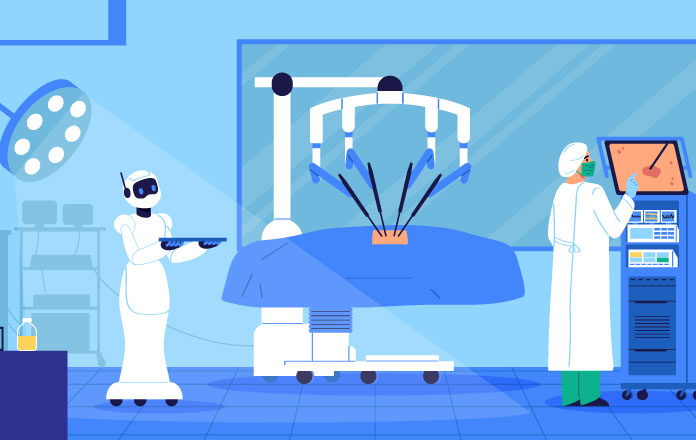Robotic surgery is on the rise and will remain so; it has been for years now. Advancements in technology have allowed us to take giant leaps in the field of surgery, making regular surgery more efficient, safe and accurate. Remarkable developments in the robotic surgery field might change the entire dimension of healthcare.
Robotic Surgery: An Introduction
Robotic surgery is an ever-increasing field of medical technology. Surgical treatments with the intervention of robots can comprehend the benefit of improved precision and non-invasive surgeries while reducing the chances of infection. It is more commonly helpful in decreasing pain and scarring for patients.
The most common application of robotic surgery consists of minimally invasive procedures. MIS is any surgical intervention to create small incisions, which has become increasingly widely applied in more recent years considering the advantages, which are fewer hospital days, recovery time, and less scarring because it can also be well managed even for challenging procedures like heart surgeries. Robotics will majorly dominate future surgery fields in the coming years.
Benefits of Robotic Surgery
As compared to conventional surgical techniques, robotic surgery is the most captivating advancement in the medical field. The ability to perform movements with infinitely more precision and steadiness than human hands certainly improve the chances of patient outcomes. Robots also tend to limit the amount of blood loss and scarring while developing more extended hospital stays and recovery times.
Types of Robotic Surgery
Robotic surgery has become revolutionary in the health sector, bringing advantages to most of the patients. So, there are different kinds of robotic surgeries, each with its benefits. One of them is minimally invasive surgery. It is surgery less invasive than traditional open, big incisions; it is less painful and requires a short recovery time. Minimally invasive surgery may be performed through surgical robots or by the laparoscope.
Further, there is remote-controlled robotic surgery. A remote-controlled surgery lets the surgeon operate the surgical robot at a location very far from where it is. The surgeon operates using a joystick or a similar device. It gives the surgeon the advantage of performing the procedure more precisely and accurately. It is perfect for operations that necessitate a high degree of dexterity due to showing very long-distance approaches.
Robots in the Operating Room
Robotics in surgery is changing the paradigm of medicine. They have changed the kind of precision and control a surgeon experience in the operating room. Most challenging and risky operations are done as safely and successfully as possible because of robotic technology.
Robotics is benefiting in terms of increased efficiency of operation and faster recovery for patients. Since robotic surgery is less invasive, it leads to less trauma to the body and a quicker recovery. Patients can often go home the same day or the next after the procedure. Robotic surgery is undoubtedly the future of surgery. Robot-assisted surgery has progressed considerably in recent times, and it will be interesting to see how that technology evolves soon.



